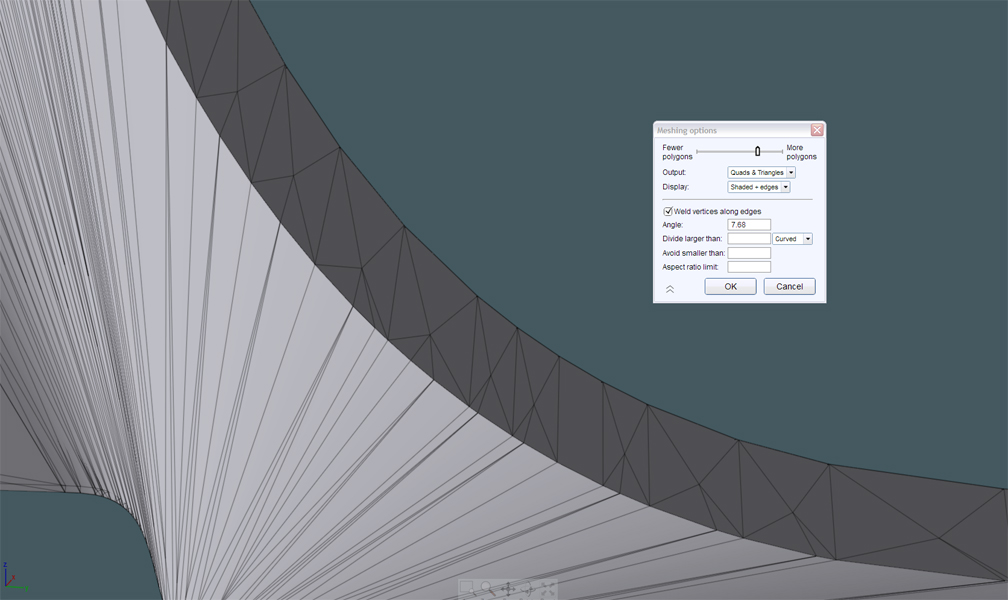LOL!!!!!!! Creative, Lejan!
"If you can't fix it, caulk it" is what the contractors say.
> rubber seal.Moi says that's a joined surface,not a solid...
M, you are right:

You can see where the tessellated polygons do not come together and do not match.
Michael, these surfaces said they were joined, but upon closer examination, when you separate the whole object set and try to join the surfaces in question separately, they refuse to.
To let you know the possible reason, the method for their creation involved Lofting a surface between two closed curves that were duplicated from the edges of the top and bottom surfaces of the seal shape.
As I have discovered, Loft uses some type of interpolation, which means that the new Lofted surface intended to become the sides may have been an in-approximate representation of the large surfaces they were created to link.
Here is how I went about fixing it: I separated these surfaces to free-standing pieces. I tried to Join those two surfaces in question, but they still refused. I can gather that the edge curves that define these two supposedly adjacent surfaces do not actually run the same course, and have some minute separation between them. This is where the command "MatchSrf" would have been king!
I was under impression that Join was good a working around these "near misses".
So, I took these two surfaces and performed a Boolean Union. They are now one joined surface as shown here:

As you can see here, when exported, the polygons are now "matched" together and connected with no peering seam.
Michael, I'd like to know a little about how Boolean Union lined these two edges up. Maybe they actually crossed?
I invite you to also look at those surfaces in the provided model.
This has actually been a good event in this project. It's nice to find problems that arise in the modeling process and then figure ways to remedy them.